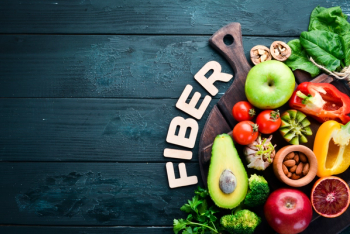
- Nutritional Outlook Vol. 18 No. 3
- Volume 18
- Issue 3
Next Stop: Turmeric Beverages
But the popular ingredient poses certain challenges for formulators
Few herbals can rival turmeric’s astronomical rise in popularity over the last few years. Named 2013’s top-selling herbal supplement in the U.S. natural health channel by the American Botanical Council, the famous orange rhizome has continued to gain momentum for its possible effects on everything from arthritis to depression.
Several turmeric manufacturers are looking to build off the craze by infusing beverages with curcumin, the active compound in turmeric (Curcuma longa). But formulating the ingredient into an attractive and palatable drink can prove more challenging than you might think.
Appearances Are Everything
Curcumin’s orange or vivid yellow coloring may be its signature characteristic, but it also presents certain obstacles. For one, the ingredient’s staining properties can be troubling for both manufacturers and consumers.
“Formulators find it hard to contain the yellow staining nature of curcumin in equipment and any facility handling curcumin products,” says Anurag Pande, PhD, vice president, scientific affairs, Sabinsa Corp. (East Windsor, NJ). Curcumin may also stain teeth, says Pande, which is why chewables or mouthwashes containing curcumin are basically “nonexistent.”
One of the ways Sabinsa addressed this problem was by launching C3 Reduct, “an off-white–to–white color [curcumin] extract which does not have staining properties,” says Pande. He expects the extract to open even more doors for the celebrated ingredient, especially in the oral health world.
Aside from staining concerns, curcumin’s hydrophobic nature often causes particles of the ingredient to settle at the bottom of beverage containers, forming an orange sediment that consumers may not find attractive. Exposure to light can also cause curcumin to degrade, further limiting the ways a curcumin beverage can be attractively presented. Opaque packaging is one option to address both of these dilemmas, but it can also be more expensive.
At Natural Products Expo West 2015, Sabinsa announced it may have a better solution to these challenges. The company is currently debuting
uC3 Clear dissolves completely in water, avoiding the unsightly settling issue entirely, says Shaheen Majeed, marketing director, Sabinsa. He adds that uC3 Clear held up well in a photo-sensitive study and is therefore appropriate for beverages with clear packaging.
“The idea of launching uC3 Clear is to enhance the consumer experience of curcumin with a more convenient and improved delivery system,” says Majeed. The new ingredient contains 10%-15% curcuminoids, and Majeed recommends dosages of up to 200 mg/day.
One other measure turmeric formulators may need to take is storing the ingredient in closed containers. Like many organic materials, turmeric can degrade from oxidation when exposed to air, according to Lynda Doyle, vice president, global marketing, OmniActive Health Technologies (Morristown, NJ). OmniActive not only stores its CurcuWin turmeric extract in closed containers, it also combines the ingredient with antioxidants such as tocopherol to protect the curcuminoids against oxidation, says Doyle.
A Flavorful Challenge
Cucumin’s bitter taste is also a factor to work around. Juice company Urban Remedy (San Rafael, CA) has found a simple way to mask the ingredient’s taste in its turmeric-containing Boost beverage.
“Turmeric has a very earthy flavor many don’t find appetizing,” says Urban Remedy Founder Neka Pasquale. “By freshening it up with some organic lemon juice and a little bit of stevia, we were able to offset the earthy flavor, making it more refreshing.” Another Urban Remedy beverage, Cold Crusher, launched in Fall 2014, combines turmeric, carrot, orange, and lemon.
Cashew milk, pineapple, carrot, ginger, beet, mango, apple, and maple syrup are a few of the other ingredients beverage companies have combined with turmeric.
Although it may not be a simple task to formulate turmeric beverages, these companies have clearly found innovative ways to do just that.
Read more on turmeric:
Articles in this issue
over 10 years ago
Oral Health and the Role of Dietary Supplementsover 10 years ago
Are Health Food Stores Losing Relevance?over 10 years ago
Branded Ingredients for Food, Dietary Supplements: A Two-Way Streetover 10 years ago
Lutein and Zeaxanthin Benefit Young and Old Alikeover 10 years ago
Dietary Supplement Packaging: Pouch Powerover 10 years ago
Probiotics Opening New Doorsover 10 years ago
Ingredient Spotlight: Salacia oblongaover 10 years ago
Mood and Relaxation Dietary Supplements: Hope in a Bottleover 10 years ago
Freedom to OperateNewsletter
From ingredient science to consumer trends, get the intel you need to stay competitive in the nutrition space—subscribe now to Nutritional Outlook.





